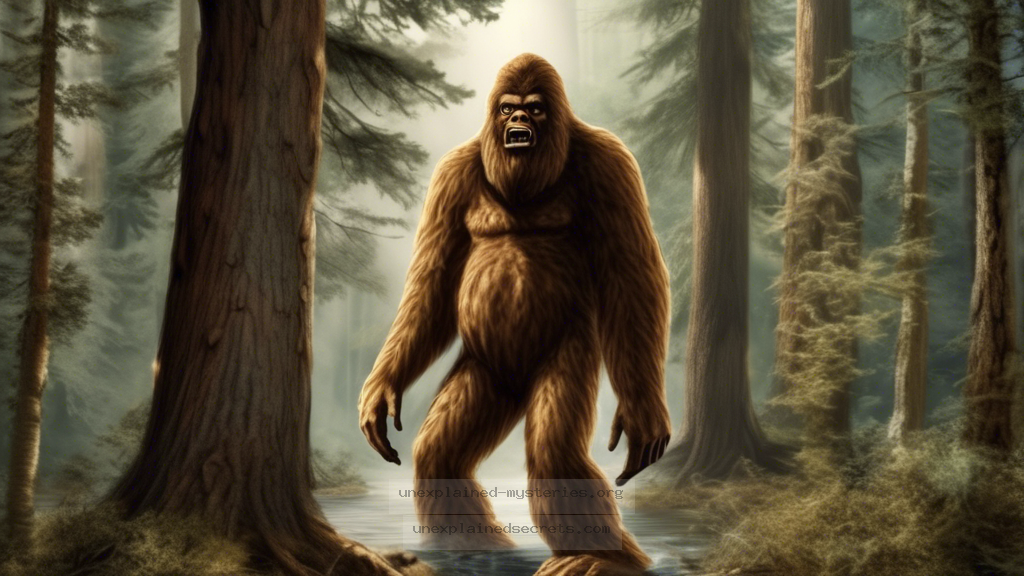What Are the Most Compelling Pieces of Evidence Supporting the Existence of Bigfoot?
What Are the Most Compelling Pieces of Evidence Supporting the Existence of Bigfoot?
The enigma surrounding Bigfoot, often referred to as Sasquatch, continues to captivate both enthusiasts and skeptics alike. The question of whether this elusive creature is real or merely a figment of folklore has led to a plethora of investigations, witness testimonies, and media portrayals that spark debate. Understanding the most compelling pieces of evidence supporting the existence of Bigfoot is crucial for cryptozoologists and enthusiasts alike, as it can provide insights into the intersections of science, myth, and human experience. In this post, we will delve into various types of evidence, historical contexts, and ongoing research to understand why the Bigfoot phenomenon remains a topic of interest and inquiry.
Historical Context: The Legend of Bigfoot
The legend of Bigfoot is deeply rooted in the folklore of indigenous peoples across North America. Stories of large, hairy beings inhabiting the wilderness date back centuries, with many tribes sharing tales of “the wild man” or “hairy giant.” For instance, the Salish people of the Pacific Northwest have long spoken of a creature known as “Sasquatch,” which translates to “wild man” in their language.
In the 19th century, reports of Bigfoot-like creatures began to emerge more frequently in written records. One notable account was provided by a settler named John Muir in 1898, who claimed to have encountered a large, hairy figure while exploring California’s Sierra Nevada. This account helped to solidify the connection between local folklore and the modern concept of Bigfoot, further fueling curiosity and investigation.
Physical Evidence: Footprints and Hair Samples
One of the most compelling forms of evidence supporting the existence of Bigfoot is the plethora of footprint casts that have been discovered over the years. These casts often measure 15 to 24 inches in length and have distinct features including a large big toe and a wide foot. One of the most famous examples is the 1967 Patterson-Gimlin film, which purportedly shows Bigfoot walking through the woods in Bluff Creek, California, leaving behind large prints.
In addition to footprints, hair samples have often been collected and analyzed. A notable case occurred in 2000 when a sample was obtained from a site in the mountains of Washington state. DNA analysis of this hair yielded inconclusive results, leading to speculation about the creature’s genetic origins. While some researchers argue that these samples could belong to known animals, others argue that the unique characteristics of the hair suggest an unknown species.
| Type of Evidence | Description | Significance |
|---|---|---|
| Footprints | Large casts measuring 15-24 inches | Physical proof of a large, unknown creature |
| Hair Samples | DNA from alleged Bigfoot encounters | Potential genetic evidence of an undiscovered species |
Audio Evidence: Recordings of Vocalizations
Another fascinating area of investigation involves audio evidence. Numerous recordings of alleged Bigfoot vocalizations exist, often described as eerie howls, grunts, or knocks. One of the most famous recordings is the “Sierra Sounds” recorded by Ron Morehead in the 1970s. These audio clips have been analyzed by experts, some of whom claim that they do not match any known animal sounds.
These vocalizations often occur in remote wilderness areas, coinciding with reported sightings of the creature. Enthusiasts argue that the complexity and frequency of these sounds suggest a highly intelligent being capable of communication, a characteristic that would support the existence of Bigfoot as a social species. However, skeptics maintain that many of these sounds can be attributed to common wildlife or even human-made noises.
Eyewitness Accounts: The Human Element
Eyewitness accounts serve as a crucial component of the Bigfoot narrative. Thousands of individuals claim to have encountered the creature over the years. These testimonies vary widely, from brief glimpses at a distance to prolonged sightings where the creature’s behavior was observed in detail. For instance, the 1997 sighting by a group of hikers in the Hoopa Valley area of California included a detailed description of an enormous, bipedal creature covered in dark hair.
While anecdotal, these accounts often share common themes, such as the creature’s size, color, and behavior. The consistency of these descriptions over time adds to the credibility of the witnesses and fuels the ongoing debate about Bigfoot’s existence. However, it is essential to approach these accounts with a critical eye, as factors such as misidentification and psychological influences can affect human perception.
Comparative Analysis: Bigfoot in Global Mythology
The concept of a large, hairy humanoid creature is not unique to North America. Similar legends exist worldwide, suggesting a shared human fascination with wild man archetypes. In the Himalayas, the Yeti, or “Abominable Snowman,” is a legendary creature reported by locals and adventurers alike. Similarly, the “Yowie” in Australia and the “Almas” in Central Asia share traits with the North American Bigfoot.
This global perspective raises intriguing questions about the psychological and cultural aspects of these legends. Are they rooted in collective human experiences with the unknown, or could they be based on encounters with actual unidentified species? Such comparisons provide valuable context for the Bigfoot phenomenon, suggesting that it may represent more than just a local myth but a universal exploration of humanity’s relationship with nature.
Scientific Investigation: The Role of Cryptozoology
Cryptozoology, the study of and search for creatures whose existence is not substantiated by mainstream science, plays a pivotal role in Bigfoot research. Cryptozoologists employ various scientific methods, including field research, genetics, and environmental studies, to uncover evidence of elusive creatures. Organizations like the Bigfoot Field Researchers Organization (BFRO) have dedicated themselves to documenting sightings, collecting evidence, and analyzing reports.
However, the scientific community remains largely skeptical about Bigfoot’s existence. Many researchers argue that the lack of concrete evidence, such as a body or definitive biological samples, undermines the credibility of the claims. Nevertheless, the intersection of folklore, personal experience, and scientific inquiry continues to intrigue a diverse audience, prompting further exploration and discussion.
Common Misconceptions: Debunking the Myths
Despite the fascination with Bigfoot, several misconceptions cloud the discourse surrounding this creature. One prevalent myth is that all sightings are hoaxes or misidentifications. While some encounters may indeed be fabricated, many credible witnesses come from diverse backgrounds and have no motive to lie. Another misconception is that Bigfoot is merely a cultural phenomenon without any basis in reality. The persistence of sightings and evidence suggests that the legend may have roots in something more substantial.
Best Practices for Investigation: How to Study Bigfoot
For those interested in pursuing Bigfoot research, several best practices can enhance the investigation process. First, thorough documentation is essential—keeping detailed records of sighting reports, locations, and any collected evidence helps build a comprehensive database. Second, collaboration with local communities and indigenous tribes can provide valuable insights into historical encounters and cultural significance.
Moreover, employing modern technology, such as motion-activated cameras and audio recording devices, can facilitate data collection in remote areas. Engaging with the scientific community to analyze findings and participate in discussions can also lend credibility to research efforts.
The Future of Bigfoot Research: Ongoing Developments
As technology advances and our understanding of wildlife evolves, the future of Bigfoot research holds promising potential. Genetic testing and environmental DNA (eDNA) analysis are becoming increasingly sophisticated, allowing for more accurate identification of biological materials collected in the field. Additionally, social media and online platforms provide unique opportunities for enthusiasts and researchers to share findings and collaborate globally.
Moreover, as society becomes more open to the exploration of cryptids, the potential for funding and academic interest in the field may grow, leading to more rigorous studies and investigations into the phenomenon. The quest for Bigfoot is not merely about proving its existence, but understanding what it represents within our collective psyche and cultural narratives.
Conclusion: The Allure of the Unknown
The question of Bigfoot’s existence remains one of the most enduring mysteries in cryptozoology. From historical accounts to modern evidence, the fascination with this elusive creature speaks to humanity’s deeper yearning to explore the unknown and challenge the limits of our understanding. While the evidence supporting Bigfoot’s existence may not yet satisfy the standards of mainstream science, the stories, experiences, and ongoing investigations contribute to a rich tapestry of intrigue and exploration.
As we continue to ponder the compelling pieces of evidence surrounding Bigfoot, it is essential to remain open-minded yet critical, embracing both the mystery and the science that fuel our curiosity. The journey into the world of cryptids like Bigfoot is as much about understanding ourselves as it is about discovering the secrets of the natural world.
Other Articles
Can Scientific Research Unravel the Enigma of Twin Telepathy?
Recent Posts
- What Happened to Flight MH370? The Conspiracy Theories That Still Haunt Us
- What Secrets Lurk Within the Walls of the Infamous Trans-Allegheny Lunatic Asylum?
- What Evidence Supports the Existence of Bigfoot in the Pacific Northwest?
- What Happened to the Indus Valley Civilization? Unraveling the Mysteries of Ancient Urban Life
- Can Telepathy Be Scientifically Proven Through Laboratory Evidence?







